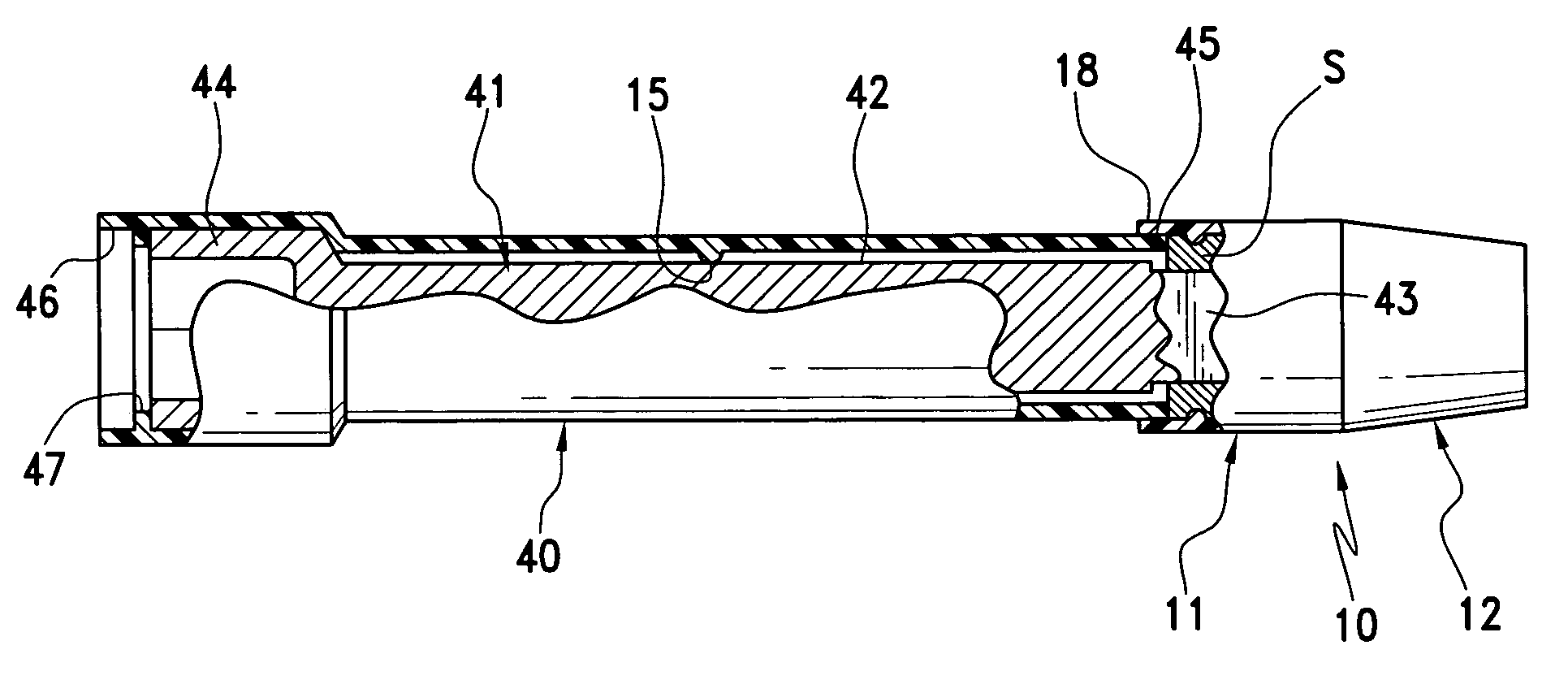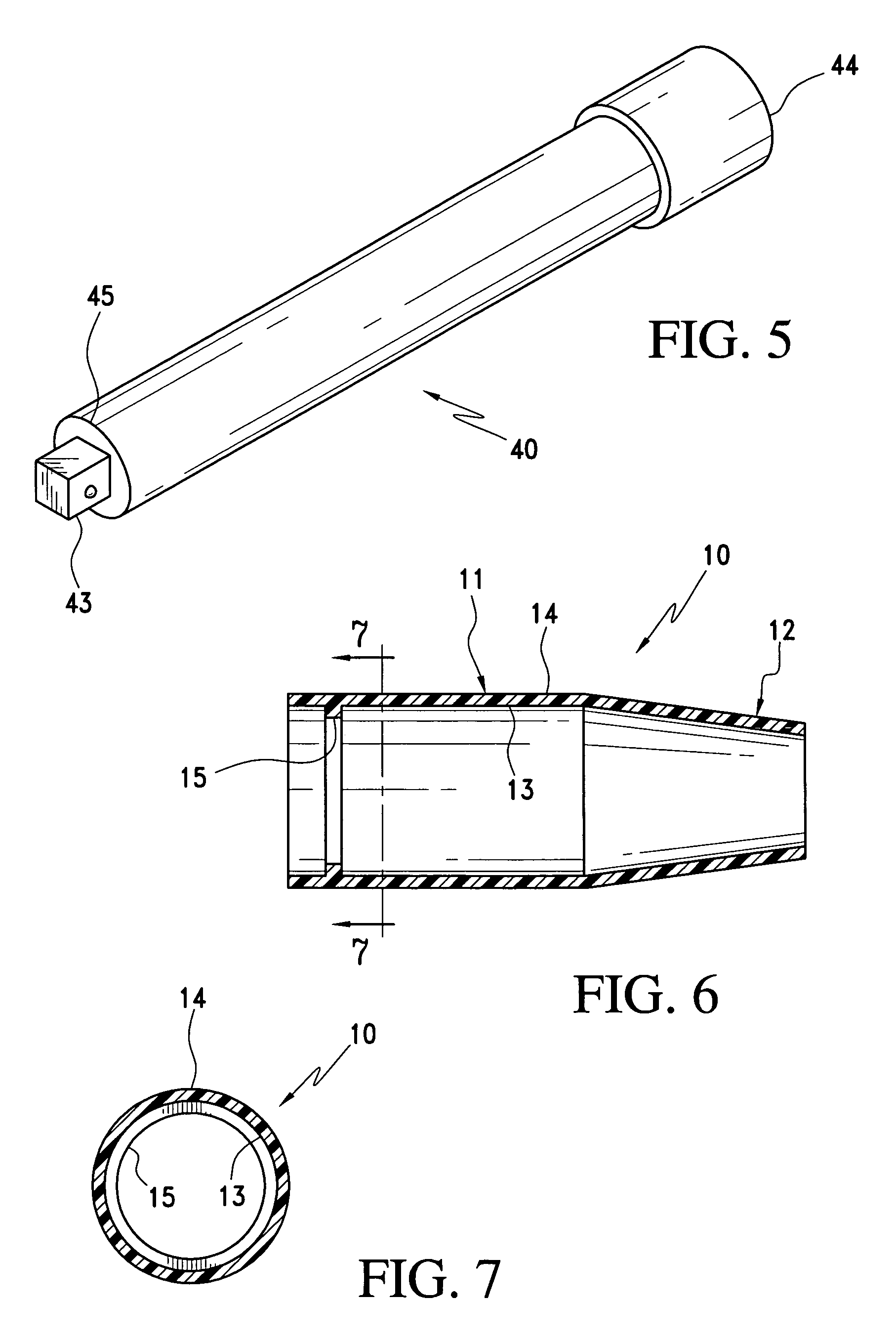Tool with protective sheath
a protective sheath and tool technology, applied in the field of tools, can solve the problems of affecting the appearance of finished surfaces, so as to prevent the marring of finished surfaces
- Summary
- Abstract
- Description
- Claims
- Application Information
AI Technical Summary
Benefits of technology
Problems solved by technology
Method used
Image
Examples
Embodiment Construction
[0041]A first form of protective sheath according to the invention is indicated generally at 10 in FIGS. 1, 2, 6, 7 and 8, and as shown in these figures is applied to a socket S of the type sold by Cooper Tools under the name Apex®. In this embodiment, the socket has a cylindrical rearward or proximal end 11 and a slightly inwardly tapered forward or distal end 12, and the sheath 10 closely conforms to this shape. The wall of the sheath has a suitable thickness, e.g., about 5.334 mm throughout the length of the cylindrical section 11, and tapering from that thickness at the juncture of the cylindrical section 11 and tapered section 12 to about 3.33 mm at the distal or terminal end of the tapered section. The sheath has smooth inner and outer surfaces 13 and 14, respectively, and in the embodiment shown in these figures an inwardly projecting annular rib 15 is formed on its inner surface in position to extend into an annular channel or groove 16 formed in the outer surface of the soc...
PUM
 Login to View More
Login to View More Abstract
Description
Claims
Application Information
 Login to View More
Login to View More - R&D
- Intellectual Property
- Life Sciences
- Materials
- Tech Scout
- Unparalleled Data Quality
- Higher Quality Content
- 60% Fewer Hallucinations
Browse by: Latest US Patents, China's latest patents, Technical Efficacy Thesaurus, Application Domain, Technology Topic, Popular Technical Reports.
© 2025 PatSnap. All rights reserved.Legal|Privacy policy|Modern Slavery Act Transparency Statement|Sitemap|About US| Contact US: help@patsnap.com



